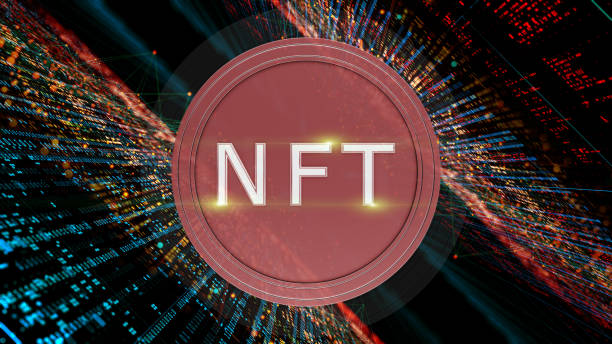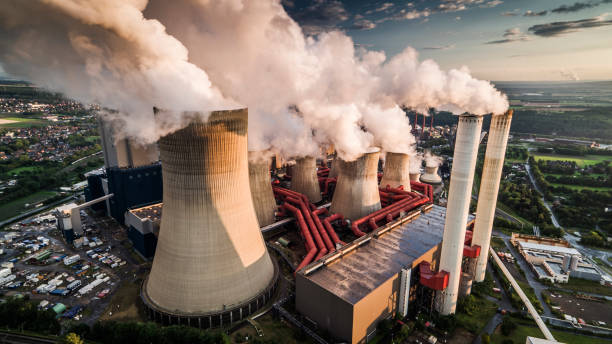The non-fungible tokens (NFTs) are slowly taking over the crypto world. Although it is a great way of empowering artists, some believe that the new market is creating a catastrophic impact on the environment, But, the true scale of this impact cannot be understood for now.
NFTs are similar to digital certificates of ownership for a tweet, an artwork, or a promise to farm 1,000 acres in a manner that ensures carbon is trapped in the ground. Fungible items like oil and money are generic and interchangeable. On their part, the non-fungible tokens have unique lines of code that integrate them with unique items.
Artists are not at fault and the ones that manage to sell their artwork are benefiting from the NFTs financially. The arts industry has suffered extensively in the past year due to the COVID-19 pandemic. Ethereum is the cryptocurrency on which most of the NFT sales are based on. In that context, the price of Ethereum is linked to the amount of demand/supply there is.
When a currency is growing, there is a lot of demand that leads to an abrupt increase in transactions. For now, time will tell whether acquiring NFTs for Beeple’s digital collage for $69M or Twitter founder Jack Dorsey’s first tweet for $2.9M were great investments or investors fell to hype like the case of tulipmania of the 1600s.
The more urgent issue for many currently is: what are the climate effects of tethering the sales of virtual items on different blockchains? Will the exchange of non-fungible tokens erect a huge hurdle in the path to saving the global warming planet.
But, before the recent heat sparked over NFTs, the blockchain-supported tokens were getting embraced by some people that were climate champions. They include two Pacific Northwest-based efforts that are working to set up trustworthy platforms for the carbon exchanges: a startup called Nori and the nonprofit Blockchain for Climate Foundation.
The founder and executive director of the Vancouver, B.C.-based foundation, Joseph Pallant, said:
“I am a booster of Ethereum and blockchain, and I’m a carbon professional.”
NFTs exist as a part of the global computing networks known as blockchains, and most of them run on the Ethereum blockchain. Users are familiar with blockchains as the foundation that powers cryptos like Ether and Bitcoin. Ether can be termed as Ethereum’s fungible token.
Climate comes into the picture since bitcoin, ethereum, and the other “proof of work” blockchains need a lot of energy to run computer servers that mine and produce crypto and do other computational transactions and tasks. ‘Minting’ NFTs is one of the tasks.
While BTC launched over ten years ago, the emergence of crypto art NFTs has brought in planetary effects of the industry to the front, highlighting a growing rift between those in support and those against the blockchain.
A senior policy associate at the nonprofit Northwest Energy Coalition, Fred Heutte, stated:
“It’s an incredibly inefficient way to do things, where people are constantly being sucked into these manias.”
Blockchains may have many positive uses but the bottom line comes to this: What is the carbon footprint for an NFT of a dancing cat video, and what happens when many people want one?
Reviewing The Carbon Footprints
As the non-fungible tokens started to cause ripples in the crypto space, members of the art community also started to raise alarms about their energy impacts. Some of the artists also opted out of NFT auctions entirely and others pledged to offset their climate effects.
The pro and con groups began lobbying extensively varying numbers for the carbon emissions of the transactions. One site started in 2014, Digiconomist, calculates the energy and carbon footprints of Bitcoin and Ethereum networks entirely.
ETH’s approximate annual energy use is over 30 Terawatt hours (TWh), which is an amount that is at par with the power that is consumed by Ireland. Interestingly, its carbon footprint is nearly 15 million metric tons of carbon dioxide. By comparison, Seattle’s yearly emissions, are around 5.8 million metric tons.
Another site on GitHub goes a notch higher. It integrates the Digiconomist data with other sources to determine the effect of the crypto-art platforms only. The biggest is OpenSea that by late March had done over 800,000 transactions.
It translated to 61,000 metric tons of carbon dioxide that the EPA equates to driving around 13,000 passenger cars for a whole year. Notably, the nine biggest crypto-art exchanges combined produced a carbon output of 22,000 vehicles. Carbon.fyi is a platform that also calculates Ethereum-driven emissions.
Pallant believes that these numbers are quite reasonable approximations but adds a slight wrinkle to the NFT calculations. It is not yet clear whether every transaction normally needs more power or is somehow folded into other operations that are also happening simultaneously. Yet, increased demand for NFTs can push up energy use, according to Pallant. He said:
“The Ethereum blockchain and all its transactions are always happening, regardless of adding NFT users or not.”
The Energy Consumption Of NFTs Is Astounding
NFTs are unique which means that the more artists mint NFTs, the more transactions are executed. Also, every bid, canceled bid, and purchase is considered a transaction. This means that an NFT is quite transaction-heavy.
Due to the nature of the NFTs transactions, they consume more energy than the regular crypto transactions in numbers, one NFT transaction consumes 82 kWh, with 48 kg of CO2 emitted. That amount is over 2.3 times higher than a normal transaction. Notably, an NFT sale from start to finish may comprise hundreds of transactions
Analysts estimate that an average NFT takes up 340 kWh of energy and emits up to 211 kg of CO2. That compares to flying for around two hours or driving for up to 620miles. The worst-case scenario is that some of the NFTs will never be sold which will make artists lose money while simultaneously harming the planet permanently.
NFTs And Offsets
Many now wonder what an organization trying to slow climate change is doing in the world of non-fungible tokens. When Gambill helped launch Seattle-based Nori in 2017, he was seeking to eliminate atmospheric carbon to help in fighting global warming. He set up a marketplace that matches farmers who adopt practices that are known to sequester carbon in the soil with consumers and institutions eager to mitigate their carbon emissions.
There was a verification of the farmers’ compliance with this program. To document these offsets and ensure that the carbon benefits are sold just once, Nori uses Ethereum to mint an NFT that it refers to as a Nori Removal Tonne (NRT).
The use of blockchain serves as an entirely transparent and secure database to track all sales and, in turn, prevent users from selling an offset twice. Gambill said:
“Carbon markets are plagued with issues of double-counting, especially in international trading. It’s a silly problem that is easily solved with double-entry bookkeeping, but thus far the international community has not agreed to do so. That’s exactly why blockchain is so useful here. NFTs are provably unique assets, and so using an NFT to represent a unique carbon certificate is the perfect application for solving this problem.”
NRTs are sold by cash or even credit cards. However, Nori plans to launch its crypto sometime later this year. It is now interesting in a bit of circularity since Gambill wants to make Nori marketplace carbon neutral by acquiring offsets to cover the emissions that are generated by his marketplace for selling these offsets.
At some point, Nori’s carbon debt may get considerably small if and when Ethereum shifts to Ethereum 2.0.
Proof Of Stake
BTC, Ethereum, and other major cryptos are consuming huge amounts of energy. The reason behind it is due to the way they operate transactions using the “proof of work” strategy to validate their systems.
Bitcoin is known by many to be a power hog and by design, it is expected to get hungrier over time since it is essentially built that way. As more crypto gets mined, it becomes harder to pull more Bitcoin from the system, hence needing more energy and more powerful servers and yielding a meager payoff.
Some of the fuel that is used to powers different blockchains is acquired from clean sources like solar, wind, and hydropower from dams like the case of the Northwest. But, the demand from the other industries will ramp up just like the case of building heating and cooling, transportation, and other power consumers move from fossil fuels to the energy grid.
Currently, Digiconomist puts Bitcoin’s yearly carbon footprint alongside Hong Kong and its energy use is at the same levels as the Philippines. A recent Bank of America report put these numbers considerably high, with carbon footprint surpassing American Airlines. It is also larger than oil giant Conoco Phillips, while its energy use is nearly the same as the Netherlands.
Another source from the University of Cambridge provides a wide range of bitcoin energy estimates; its mid-level guess is that the crypto’s power use almost matches Norway. Bitcoin’s critics like Bill Gates appear to also criticize the environmental impact of creating all the NFTs that are taking the crypto world over by storm.
But, Elon Musk thinks otherwise and his company, Tesla, already $1.5 billion worth of bitcoins earlier in the year and is accepting BTC payments for their vehicles.
Ethereum produces energy and carbon footprints that are nearly 33% of Bitcoin’s, based on analysis by Digiconomist. But, the footprint might reduce after the Ethereum community pledged to move from proof of work to the proof of stake system.
That effort has, however, been delayed for many years and with the emergence of NFTs, things might get worst for now. Even Vitalik Buterin has lamented his creation’s consumption of energy and a growing carbon footprint. Buterin said in 2019 in IEEE Spectrum:
“That’s just a huge waste of resources, even if you don’t believe that pollution and carbon dioxide are an issue. There are real consumers — real people — whose need for electricity is being displaced by this stuff.”
The IEEE story states that the launch of Ethereum 2.0 might slash its energy use by nearly 99%.
Galvanization And Mobilization
Thousand- and million-dollar NFT auctions started creating climate controversy which made Pallant enter the conversation. A March 8 post on the Blockchain for Climate Foundation site read:
“It occurred that we might be in a good position to shed some light on the topic of NFT carbon footprints, and perhaps help concerned folks in making decisions about the space.”
Pallant has been working since 2004 to create carbon markets where users buy and sell credits that mitigate carbon emissions. He later launched the foundation in 2017 aiming to put the Paris Agreement on the blockchain.
The foundation’s target is to develop tools on the blockchain for the world to have a transparent, public, and universal ledger where countries can trade and account for carbon credits to reach emission targets set by that Paris Agreement.
Using blockchain prevents the double-counting of these projects while simultaneously offering support for climate-friendly efforts globally. For instance, Canada could finance a Kenyan geothermal power project and the deal would then be accounted for through the transfer of non-fungible tokens (NFTs).
The spotlight on the Nyan Cat and Grimes video NFTs might be dominated by confusion but it helps the cause nonetheless. Pallant mentioned:
“Because more interest in NFTs begets more understanding in Ethereum as well. We have the task of explaining to decision-makers at national governments that we want to use this fancy, newfangled tool to engage with the Paris Agreement.”
Now, the NFT controversy can offer a wake-up call for the Ethereum blockchain developers to step up their carbon game. Pallant concluded:
“I really hope this is an opportunity to galvanize and mobilize members of the Ethereum community, to inspire people young and old to find solutions and build solutions to help beat climate change.”














